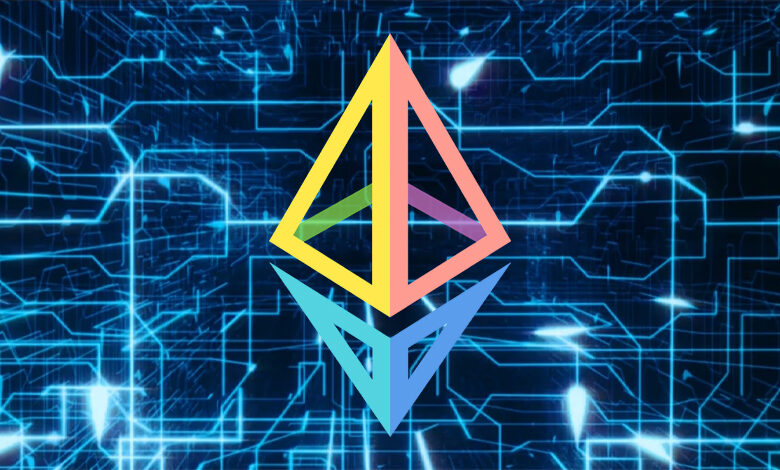Accelerating Ethereum: Vitalik Buterin’s Vision for Faster Transaction Confirmations

In the fast-evolving world of blockchain technology, transaction speed is a crucial factor influencing user experience, and there is no doubt that Ethereum has made major moves in improving transaction confirmation times over the years.
With recent advancements like EIP-1559 and stable block times post-Merge, Ethereum now boasts transaction confirmations on its Layer 1 (L1) network within 5-20 seconds, similar to the speed of credit card transactions.
Despite these improvements, there’s a constant drive to enhance user experience further, particularly for applications requiring near-instantaneous transaction confirmation times. Vitalik Buterin explores various practical options Ethereum could explore to achieve this goal.
Exploring Practical Options
Single-Slot Finality (SSF)
Currently, Ethereum utilizes a slot and epoch architecture for its Gasper consensus mechanism. Validators vote on the chain’s head every 12-second slot, with finality achieved after two epochs (approximately 12.8 minutes). However, this approach has been critiqued for its complexity and lengthy finalization times, prompting exploration into SSF.
SSF proposes a mechanism akin to Tendermint consensus, where each block is finalized before the next one is produced. This could potentially reduce finality times drastically. Challenges include the operational load on validators, but innovative proposals like Orbit SSF aim to mitigate these issues.
Rollup Preconfirmations
Ethereum’s roadmap increasingly focuses on rollup solutions, where L1 supports functionalities crucial for Layer 2 (L2) protocols like rollups, validiums, and plasmas. Rollups provide scalability while maintaining security comparable to Ethereum. However, L2s often require faster confirmation times than 5-20 seconds, necessitating decentralized sequencing networks for quicker validation.
Based Preconfirmations
Introducing based pre-confirmations leverages Ethereum’s transaction proposers to offer immediate transaction guarantees for a fee. This approach builds upon the assumption that Ethereum’s transaction proposers, motivated by potential profits from MEV (Miner/Maximal Extractable Value), will act as sophisticated actors. They are incentivized to provide a service where users can pay an additional fee to ensure their transactions are included in the upcoming block. This not only speeds up transaction confirmations but also introduces accountability: proposers risk losing deposits if they fail to deliver on their promises.
The concept of based pre-confirmations extends beyond L1 transactions to encompass L2 blocks in rollup solutions. By aligning incentives with the security guarantees of Ethereum’s main chain, based pre-confirmations offer a bridge between the scalability of L2 solutions and the robustness of L1 security.
Future Directions
Buterin outlines several strategic pathways for L2 solutions moving forward:
- Optimizing for Ethereum’s Technical Properties: L2 solutions can focus on maintaining Ethereum’s core values of decentralization and censorship resistance. By adhering closely to Ethereum’s technical specifications, these solutions ensure compatibility and interoperability with the main chain while leveraging L2 scalability advantages.
- Enhancing Server-like Efficiency with Blockchain Characteristics: Some L2 approaches may start with centralized servers but enhance their security through mechanisms like STARK validity proofs. This hybrid approach retains the efficiency of centralized systems while guaranteeing transparency and the ability for users to exit or enforce transactions on-chain.
- Compromise Approaches Integrating Security with Speed: Many L2 projects are exploring compromise solutions, aiming for faster transaction times while maintaining a high level of interoperability and security with Ethereum’s main chain. This approach acknowledges the need for speed without compromising on the fundamental principles of blockchain security and decentralization.
By exploring these diverse strategies, L2 solutions can cater to a wide range of applications and user needs, from those requiring minimal latency to those prioritizing maximum security. The ongoing evolution of Ethereum’s ecosystem continues to enrich these possibilities, driving innovation and enhancing blockchain usability across multiple layers.
As Ethereum continues to refine its transaction speed mechanisms, exploring alternatives like SSF, rollup pre-confirmations, and based pre-confirmations becomes crucial. Each approach offers distinct benefits and challenges, contributing to Ethereum’s evolving ecosystem and improving user experiences across both L1 and L2 networks. In fact, the journey towards faster transaction confirmations on Ethereum highlights Buterin and the platform’s commitment to scalability and usability, aiming to meet the diverse needs of decentralized applications and users alike.





